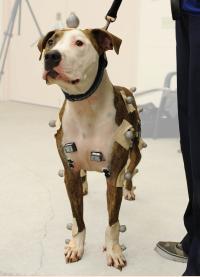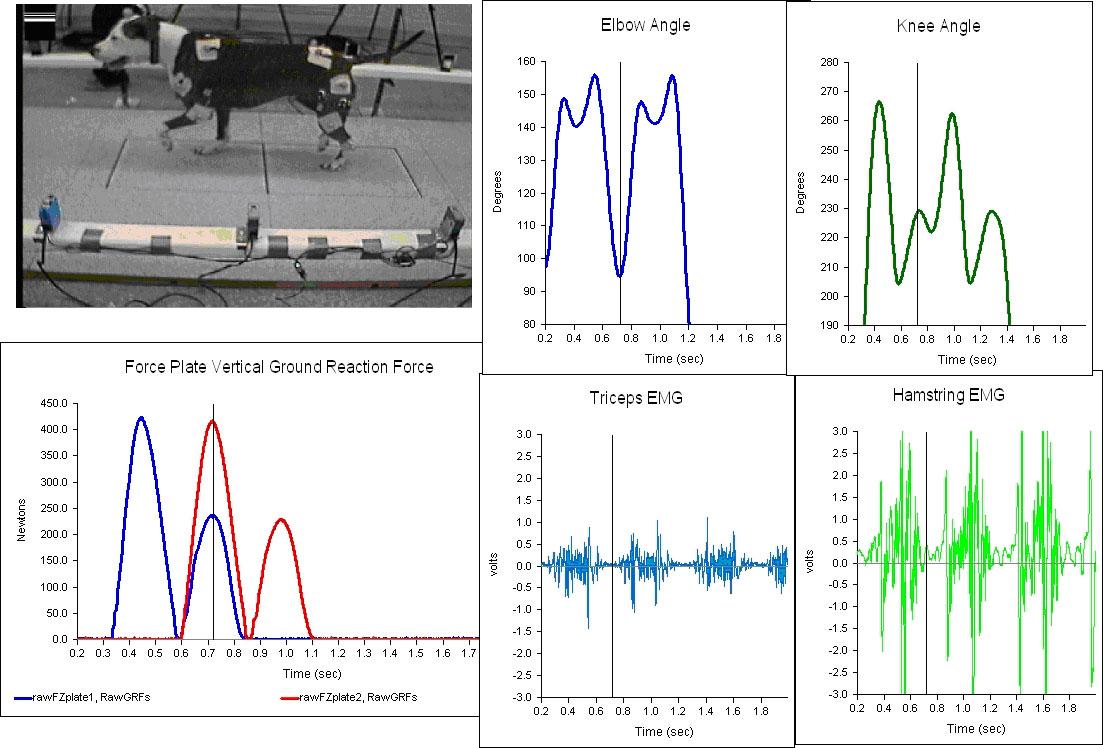Canine Gait Analysis

Gait analysis is used as a way to detect and quantify lameness in an animal. The VORL uses gait analysis in research into optimal treatments for joint problems or neurological conditions. Kinematics, kinetics and electromyography are currently being used for various studies.
Canine Gait Analysis Technical aspects

Research has included accuracy and applicability of movement analysis in dogs. Studies include analysis of the variation in weight-bearing forces recorded from multiple-measures over time and of the variation of joint angles in normal dogs.
The effect of skin movement on the accuracy of kinematic data and the accuracy of 2D versus 3D kinematics has been found. A study has been done to verify modified equipment for force detection for small breed dogs.
Canine Gait Response from Neurological or Surgical Intervention or Drug treatment
Gait analysis has been used to determine the efficacy of treatment of thoracic-lumbar neuropathy and of spinae bifida.
Clinical trials on dogs receiving treatment at the VMTH which have used gait analysis as a measure include: Radiotherapy for pain relief for advanced elbow osteoarthritis in dogs, radiotherapy for pain relief in dogs with osteosarcoma, polymethyalmethacralate injection into osteosarcoma lesions as a pain relief, and drug/neutracutical treatment for elbow dysplasia.
